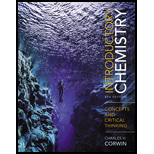
(a)
Interpretation:
The group number of boron group in periodic table is to be identified.
Concept introduction:
The periodic table represents elements in order of their
(b)
Interpretation:
The group number of oxygen group in periodic table is to be identified.
Concept introduction:
The periodic table represents elements in order of their atomic number. In the modern periodic table, the horizontal rows are known as periods and vertical columns are known as groups. There are seven periods and eighteenth groups in modern periodic table.
(c)
Interpretation:
The group number of nickel group in periodic table is to be identified.
Concept introduction:
The periodic table represents elements in order of their atomic number. In the modern periodic table, the horizontal rows are known as periods and vertical columns are known as groups. There are seven periods and eighteenth groups in modern periodic table.
(d)
Interpretation:
The group number of copper group in periodic table is to be identified.
Concept introduction:
The periodic table represents elements in order of their atomic number. In the modern periodic table, the horizontal rows are known as periods and vertical columns are known as groups. There are seven periods and eighteenth groups in modern periodic table.
Want to see the full answer?
Check out a sample textbook solution
Chapter 5 Solutions
Introductory Chemistry: Concepts and Critical Thinking Plus MasteringChemistry with eText -- Access Card Package
- Consider the following elements: chromium, tungsten, yttrium, vanadium, indium Which one does not belong to the group? and, What is common to the rest of the elements in the list above?arrow_forwardWhich of the multiple choice is the right answer confused. Question-why does the atomic radius of elements get bigger as we go from top to bottom on the periodic tablearrow_forwardwhat transion metals have a fixed charge on the periodic table?arrow_forward
- Which group(s) in the periodic table contain only nonmetals?arrow_forwardDisscuss why technetium and promethium have whole number atomic masses and have a bracket symbol on the periodic table.arrow_forwardAddress the different grouping/ family of elements in the periodic table and how are they differentiated/ distinct from each other?arrow_forward
- helium has a much higher first ionization energy than does hydrogen because (blank) has a very stable outer electron structure, consisting a filled principal energy levelarrow_forwardSuggest reason why only known binary compounds of noble gases arefluorides and oxides of Krypton, Xenon.arrow_forward13please answer and refer to the periodic tablearrow_forward
- Chemistry: Matter and ChangeChemistryISBN:9780078746376Author:Dinah Zike, Laurel Dingrando, Nicholas Hainen, Cheryl WistromPublisher:Glencoe/McGraw-Hill School Pub Co
 Chemistry for Today: General, Organic, and Bioche...ChemistryISBN:9781305960060Author:Spencer L. Seager, Michael R. Slabaugh, Maren S. HansenPublisher:Cengage Learning
Chemistry for Today: General, Organic, and Bioche...ChemistryISBN:9781305960060Author:Spencer L. Seager, Michael R. Slabaugh, Maren S. HansenPublisher:Cengage Learning Chemistry by OpenStax (2015-05-04)ChemistryISBN:9781938168390Author:Klaus Theopold, Richard H Langley, Paul Flowers, William R. Robinson, Mark BlaserPublisher:OpenStax
Chemistry by OpenStax (2015-05-04)ChemistryISBN:9781938168390Author:Klaus Theopold, Richard H Langley, Paul Flowers, William R. Robinson, Mark BlaserPublisher:OpenStax


